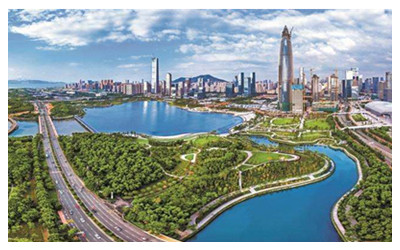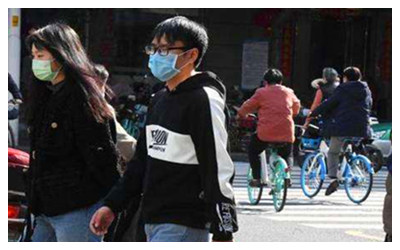
China Environment
Since the founding of the People’s Republic of China in 1949, particularly after the introduction of the reform and opening-up policies of 1978, the Chinese government and the Chinese people have gained an increasingly deeper understanding of the importance of environmental protection and ecological conservation. In recent years, much headway has been made in pollution treatment and ecological progress.
LEGISLATION
With the fast development of economy and industrialization in the past seven decades, China has witnessed an increasing occurrence of environmental problems. The Communist Party of China (CPC) and the Chinese government have paid great attention to this situation, and formulated various laws and regulations to improve ecological environment.
1973: Environmental protection was taken as a criterion to evaluate government performance at the first National Environmental Protection Meeting.
1978: It was included into the Constitution that “The State protects the environment and natural resources. It prevents and controls pollution and other public hazards.”
2002: The Law on Promotion of Cleaner Production came into effect, indicating China had changed from treating pollution at terminals to controlling pollution in the entire production process.
2012: The report to the 18th CPC National Congress called for hard work to build a beautiful country, and achieve lasting and sustainable development of the Chinese nation.
2017: The report to the 19th CPC National Congress proposed speeding up reform of the system for developing an ecological civilization, and building a beautiful China.
INVESTMENT
With the understanding on environmental protection growing deeper and deeper, more investments have been made to promote ecological progress and environmental protection in the past 70 years. Annual Expenditure on Environmental Protection:
In early 1980s: 2.5-3.0 billion yuan; In late1980s:10.0 billion yuan; In 2000: 101.0 billion yuan; In 2005: 256.5 billion yuan; In 2010: 761.2 billion yuan; in 2015: 880.6 billion yuan; In 2017: 953.9 billion yuan.
ECOLOGICAL PROGRESS
In 2018, 7.07 million hectares of trees were planted, up by 38.5% from the year 2000.
According to the UK journal Nature Sustainability released in February 2019, China alone accounted for 25% of the global net increase in leaf area between 2000 and 2017, and most of the greening area in China were the result of various tree planting campaigns.
POLLUTION TREATMENT
 The awareness of pollution control has become increasingly stronger in the past 70 years in China. In particular, a spate of policies, laws and measures were launched after 2000, greatly curbing the pollution of air, water and soil, and improving the overall environment.
The awareness of pollution control has become increasingly stronger in the past 70 years in China. In particular, a spate of policies, laws and measures were launched after 2000, greatly curbing the pollution of air, water and soil, and improving the overall environment.
INFRASTRUCTURE
Over the past 70 years, China has built up its environmental protection infrastructure from scratch. In particular, after 1978, the construction of environmental protection infrastructure has gathered speed, bringing about a significant improvement of people’s living conditions.
In 2017, the rate of urban domestic sewage disposal was 94.5%, up by 60.2 percentage points from the year 2000; the rate of domestic waste bio-safety disposal was 97.7%, up by 39.5 percentage points; the rate of population with access to tap water was 98.3%, up by 34.4 percentage points; the rate of population with access to gas was 96.3%, up by 50.9 percentage points; the coverage of centralized heating was 8.31 billion square meters, up by 6.5 times; the per-capita green park space was 14.0 square meters, up by 2.8 times.
In townships in 2017, the rate of domestic sewage disposal was 17.2%; the rate of domestic waste bio-safety disposal was 23.6%, the rate of population with access to tap water was 78.8%, and the rate of population with access to gas was 25.0%.
In villages in 2017, the rate of population with access to sanitary toilets was 81.7%, up by 36.9 percentage points from 2000.
Open & Green Space for Citizens
Since China is the most populous country in the world, most big cities are densely populated and short of open spaces. Thus the scientific use of limited spaces are extremely important, and strategic to environment improvement. In modern urban planning and residential planning, governments make efforts to ensure there are green and relaxing spaces for city dwellers, and that lots of plants are planted along streets and in residential areas, for this could improve air quality and beautify environment. Lots of parks with a high rate of plant coverage are built, and open spaces in local universities are available for local people, who have a walk in beautiful campus, and play badminton in courts.
Much headway has been made in environmental protection and ecological progress since the founding of New China in 1949. Yet, it must also be noted that the country is still faced with severe challenges. We must treasure nature more consciously, protect the ecosystem more actively, and strive to build an ecological civilization and sustain development.
 How to avoid adverse environment?
How to avoid adverse environment?
Before you plan to have a trip in China, you should know the best tour season of each region. For a tour to historic and cultural sites, all year round is suitable, while for a tour to see natural scenery, March to November is suitable of green scenery, and December to February is suitable for winter scenery. For a tour in northern cities in China, winter days with smog weather will affects sceneries and also your emotion. But the southern cities are rarely affected by smog weathers. Therefore, I advice that you’d better avoid smog weather. If your tour in China is scheduled in winter days, please remember to buy some masks.







 Ask Questions ?
Ask Questions ?